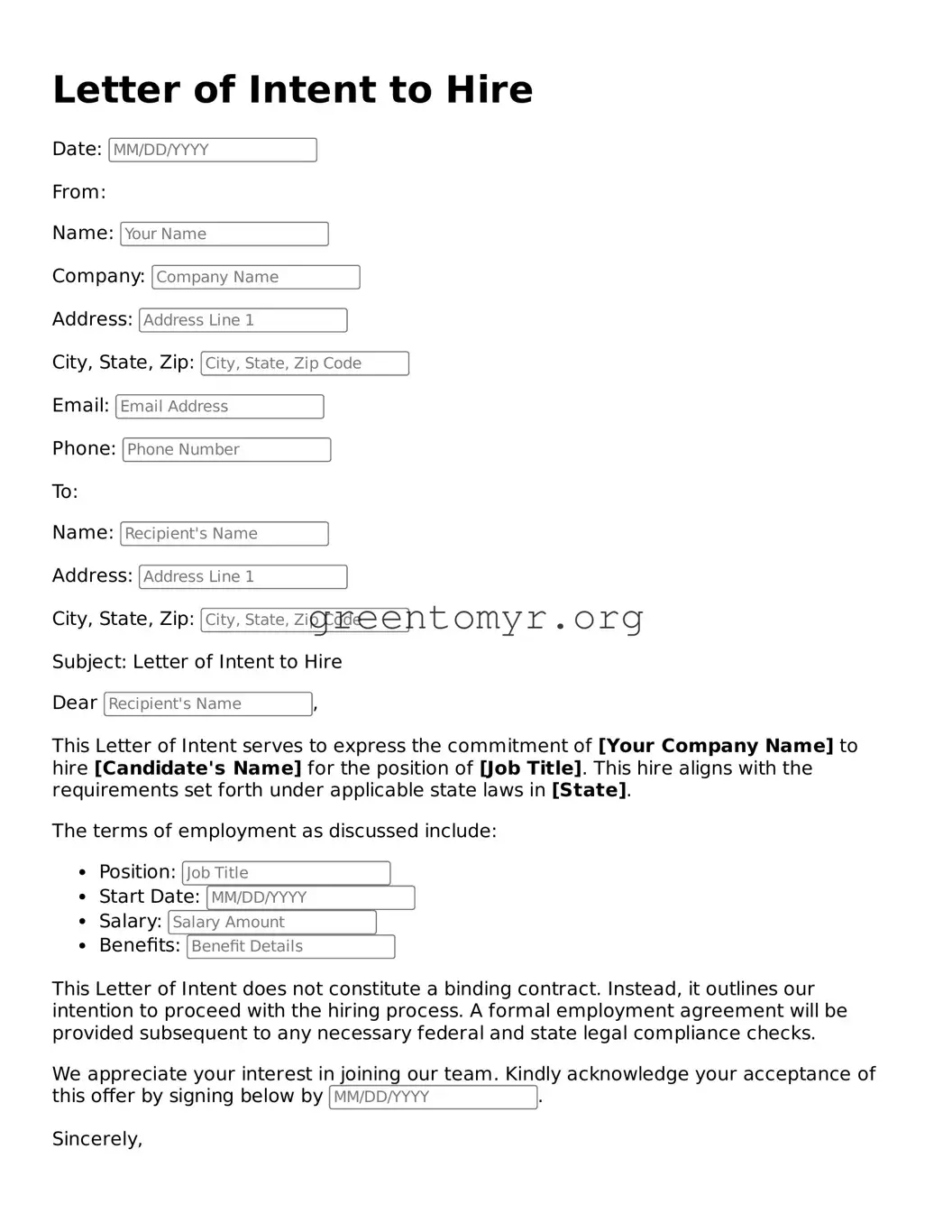What is a Letter of Intent to Hire?
A Letter of Intent to Hire is a document that outlines an employer’s intention to offer a job to a candidate. It serves as a formal communication that indicates the employer's interest in moving forward with the hiring process. While it is not a legally binding contract, it may specify key terms of employment that are significant to both parties.
What should be included in a Letter of Intent to Hire?
Typically, a Letter of Intent to Hire should include:
-
The name of the candidate.
-
The position being offered.
-
A brief overview of the company's intentions.
-
Key terms of employment, such as salary, start date, and benefits.
-
A timeline for the next steps in the hiring process.
Including these elements helps set clear expectations for both the employee and employer.
Is a Letter of Intent to Hire legally binding?
No, a Letter of Intent to Hire is generally not legally binding. It acts more as a formal offer rather than a contract. However, it does convey serious intent to proceed with employment, and both parties should abide by the terms outlined as a matter of good faith.
When should an employer send a Letter of Intent to Hire?
An employer should send a Letter of Intent to Hire once they have completed the interview process and identified a preferred candidate. This letter serves to formally express the intent to hire, and it can also clarify important details, minimizing misunderstandings as the hiring process progresses.
Can a candidate negotiate the terms after receiving a Letter of Intent to Hire?
Yes, a candidate can absolutely negotiate the terms outlined in the Letter of Intent. Open communication is encouraged. If a candidate has concerns or would like to discuss changes related to salary, benefits, or start dates, it is advisable to do so promptly after receiving the letter.
What happens after a Letter of Intent to Hire is sent?
Once the Letter of Intent to Hire has been sent, the usual next steps include discussions about the terms of employment. Once those terms are finalized, it's common for the employer to follow up with an official employment contract, which both parties will sign. Until everything is signed and agreed upon, the candidate remains free to consider other job offers.
How long should a candidate take to respond to a Letter of Intent to Hire?
Candidates should respond to a Letter of Intent to Hire within a reasonable timeframe, usually within a week. This allows for ample time to review the document, consider any negotiations, and communicate clearly with the employer, ensuring a smooth hiring process.
What if the terms in the Letter of Intent to Hire change before the final contract is signed?
If the terms in the Letter of Intent change before the final contract is signed, the employer must communicate any adjustments to the candidate. Both parties should agree on the modifications before finalizing the contract. Maintaining transparency during this process is crucial to building a positive working relationship.
Can a Letter of Intent to Hire be rescinded?
Yes, a Letter of Intent to Hire can be rescinded by the employer prior to the candidate signing an employment contract. However, this should not be done lightly. Employers should consider the implications and maintain integrity throughout the hiring process, as rescinding an offer can harm the company's reputation and future hiring efforts.
